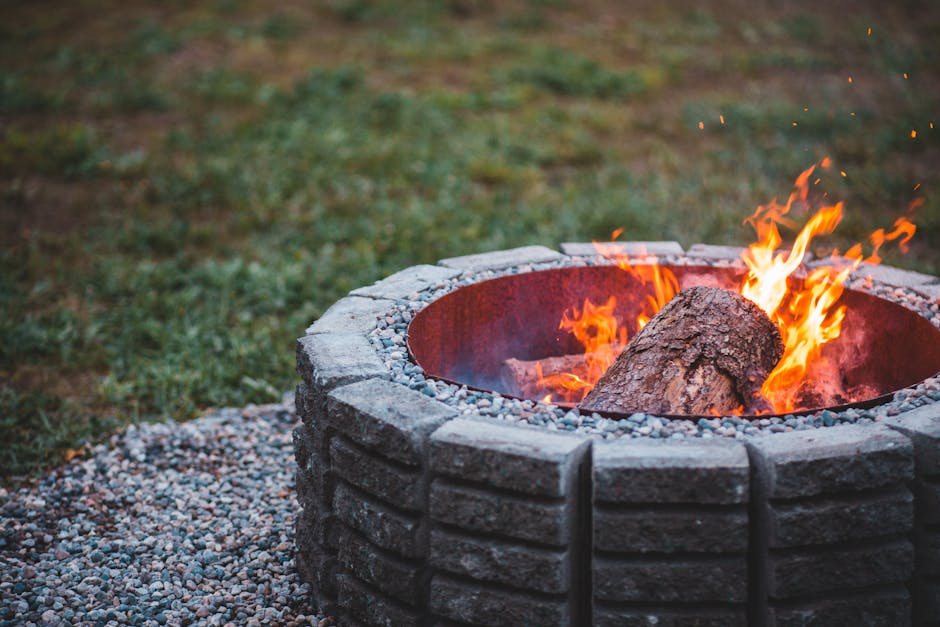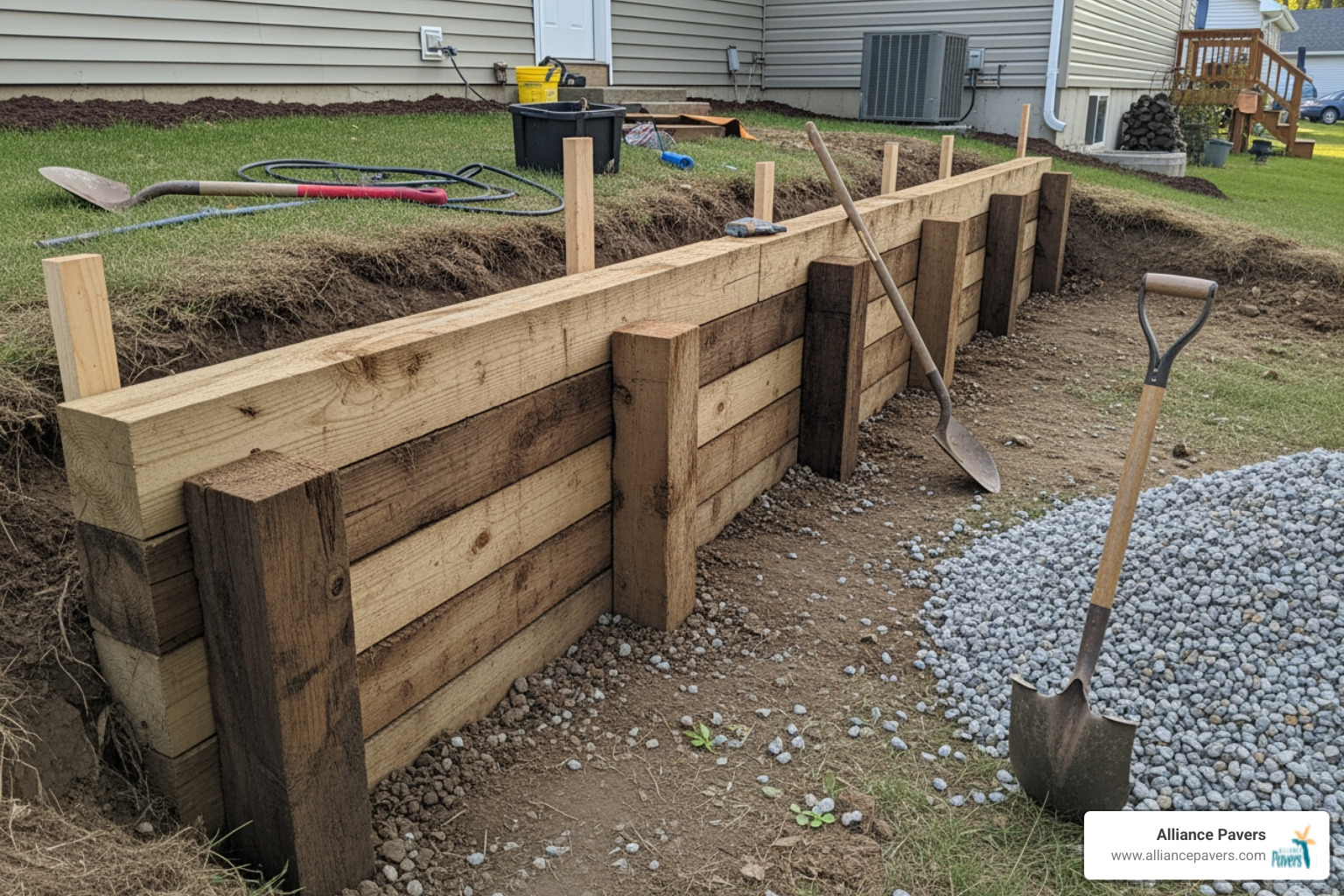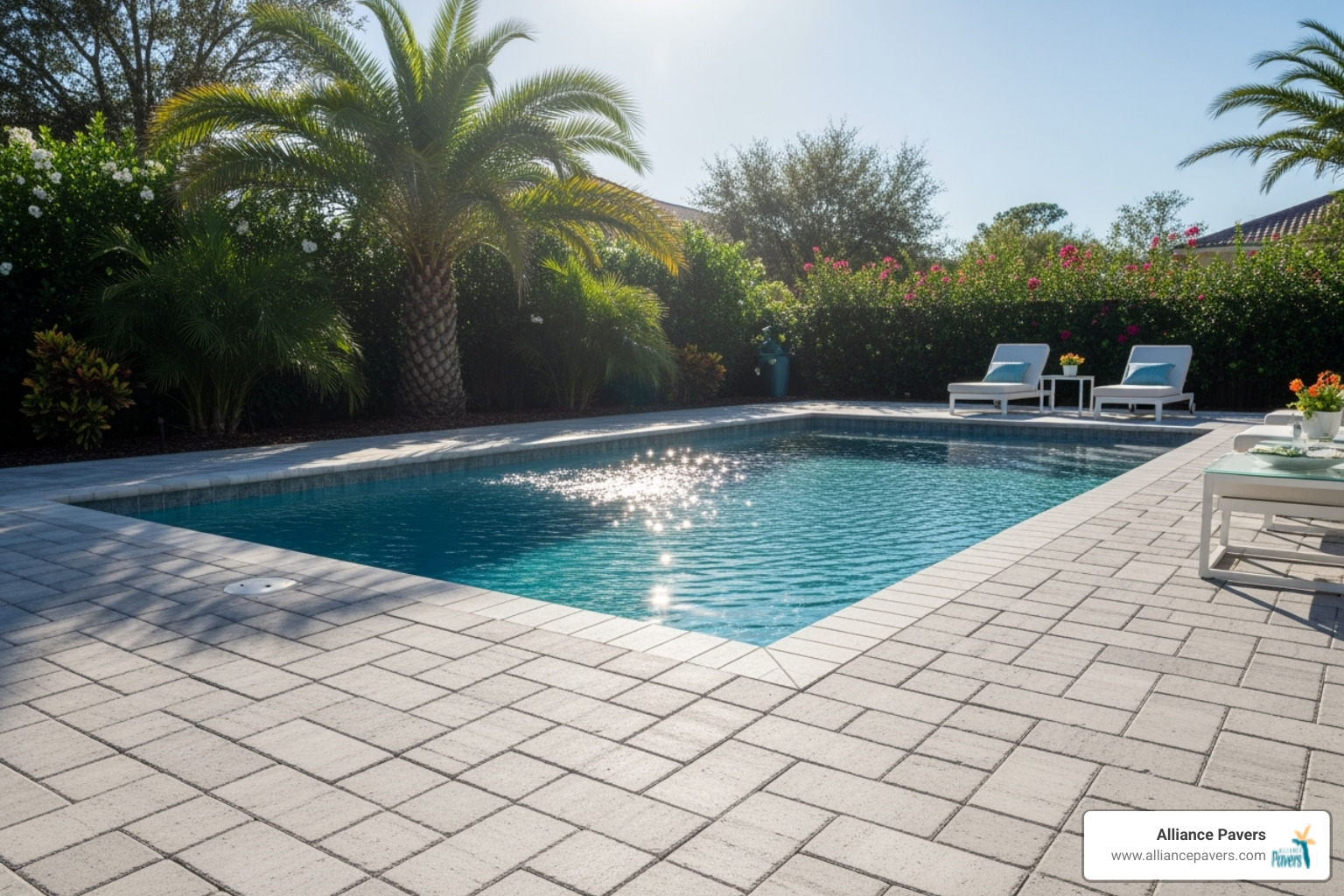Stone Fire Pits: Your Guide to Buying the Perfect Backyard Centerpiece
Design & build your dream stone fire pit! Learn planning, materials, safety, and DIY steps for your perfect backyard centerpiece.

Why Stone Fire Pits Are the Ultimate Backyard Investment
A stone fire pit transforms any backyard into a year-round gathering space, bringing families together and adding significant value to your home. According to real estate experts, a stone fire pit with a natural gas burner can yield up to a 78% return on investment, making it one of the smartest outdoor improvements you can make.
Top reasons homeowners choose stone fire pits:
- Durability - Stone withstands extreme heat and weather for decades.
- Low maintenance - Unlike metal fire pits that rust, stone requires minimal upkeep.
- Design flexibility - Available in countless styles from rustic fieldstone to sleek pavers.
- Year-round use - Perfect for Florida's mild winters and cool summer evenings.
- Property value - Considered a premium feature by homebuyers.
- Versatility - Works with both wood-burning and gas fuel options.
Stone fire pits blend with any outdoor setting, creating a low-maintenance feature that ages gracefully. Whether roasting marshmallows or hosting gatherings, a stone fire pit becomes the natural focal point that draws people together.
Choosing the right materials, size, and location is key. From DIY kits to custom professional installations, there's a stone fire pit solution for every Central Florida homeowner.

Planning Your Perfect Backyard Fire Pit
Planning your stone fire pit is about creating the perfect gathering space. The right plan ensures your fire pit becomes a family favorite, not an unused corner ornament.
Location is key for safety. Place your fire pit at least 10-20 feet from your house, fences, sheds, or overhanging trees to protect from sparks and heat. Also, consider prevailing winds. Position your pit so smoke blows away from your home and seating areas.
Plan for more space than you think. A 3-4 foot fire pit needs about 7 feet of clear space around it for seating, meaning your total area should be at least 14-16 feet in diameter to avoid feeling cramped.
Budgeting wisely helps you choose the best option. DIY projects using paving stones, fire rings, and gravel offer great value and customization. Pre-made kits are more convenient but often cost more and may require extra materials. Professional installation is a larger investment but guarantees proper, safe construction and a finished look that adds value. A well-built stone fire pit is an investment in family memories and property value.
For inspiration on integrating your fire pit into a complete outdoor living space, check out these 30 Stone Fire Pit Ideas. And don't forget to plan comfortable seating with our guide on Planning Your Fire Pit Seating Arrangement.
Popular Styles and Designs
Stone fire pits are incredibly versatile, with a style for every backyard. From rustic retreats to modern gathering spaces, stone adapts to your vision.

Round fire pits create a classic campfire feeling, naturally drawing people into a conversational circle.
Square and rectangular designs offer a contemporary look that pairs well with modern furniture and structured landscapes, ideal for L-shaped or U-shaped seating.
You can choose between in-ground pits for a seamless look or raised pits that create a focal point and are easier to tend.
The stone style sets the mood. Rustic fieldstone offers natural charm, while sleek pavers create clean, modern lines. For gas pits, colored glass adds a unique touch.
Your stone fire pit can be a compact feature or a grand centerpiece. Choose a style that fits your space and lifestyle.
For urban backyards with modern aesthetics, explore our insights on Modern Fire Pit Designs for Urban Backyards.
Choosing Between Wood and Gas
The choice between wood and gas depends on the experience you want. Both create wonderful gathering spaces in different ways.
Wood-burning fire pits offer authentic campfire magic: crackling sounds, smoky aroma, and dancing flames. They're perfect for roasting marshmallows and late-night stories. Building a wood-burning pit is simpler, but they require more work: sourcing firewood, tending the fire, and cleaning ashes, plus managing smoke and sparks.
Gas fire pits offer convenience and consistency. With the flip of a switch, you get instant, controllable flames with no smoke, sparks, or ash. They're perfect for spontaneous gatherings and can be improved with decorative fire glass or lava rocks. The trade-off is a higher upfront cost, especially for a natural gas line, and the need for professional installation for safety. Many find the convenience worthwhile.
FeatureWood-Burning Fire PitsGas-Powered Fire PitsAmbianceAuthentic crackle, smoky aroma, dancing flamesClean, consistent flame, modern aesthetic, minimal odorConvenienceRequires firewood, fire tending, ash cleanupInstant on/off, no tending needed, minimal cleanupMaintenanceHigher maintenance with ash removal and wood storageLower maintenance with occasional gas component cleaningCostLower initial build cost, ongoing fuel expensesHigher initial installation cost, ongoing fuel expenses
The best choice depends on whether you prioritize authentic ambiance or modern convenience. Learn more in our guide: Choose Gas vs. Wood-Burning Fire Pits.
Understanding Local Regulations and Safety
Understanding local regulations and safety rules is crucial to protect your investment and your family.
Building codes and permit requirements vary. Many areas require fire pits to be 10-20 feet from structures and may require permits for permanent or gas-fueled installations. Check with your local building department for open burning restrictions, which can be seasonal or neighborhood-specific. Getting this information upfront prevents future fines.
Safety clearances protect against accidents. Place your stone fire pit on a level, non-combustible surface, away from flammable materials like dry grass or wooden structures. Avoid placing it directly on concrete, as extreme heat can cause damage.
Keep fires to a manageable size. Always supervise the fire, have water or a fire extinguisher nearby, burn only seasoned wood, and never use accelerants.
Gas fire pit installations require professional expertise. Proper connections, ventilation, and safety shutoffs must meet strict codes. Professional installation is essential for safety and peace of mind.
Our team has 25 years of experience ensuring fire pit installations meet all local codes and safety requirements. For comprehensive safety information, review our guide on Safety Features for Custom Fire Pits.
Materials and Kits: The Building Blocks of Your Stone Fire Pit
Choosing the right materials for your stone fire pit determines its beauty and longevity. Understanding your options upfront saves time and money.

Natural stone is the gold standard. Materials like granite, slate, and basalt offer superior heat resistance, making them safe and durable for decades.
Concrete pavers and tumbled wall blocks are popular for DIY projects due to their availability and consistent sizing, which simplifies installation. Tumbled blocks fit snugly for a cleaner look.
Pre-made fire pit kits are a convenient option. They include pre-cut stones and often accessories like steel rings, eliminating guesswork, though they may cost more than sourcing materials yourself.
Match the material to your home's aesthetic. Rustic fieldstone suits cottage-style homes, while sleek pavers complement modern architecture. For detailed guidance, explore our insights on Fire Pit Materials That Match Your Home.
DIY Materials vs. Pre-Made Kits
Choosing between DIY materials and a pre-made kit depends on your comfort level, time, and desired customization.
The DIY route offers the most cost savings and creative freedom, giving you control over size, shape, and stone type. However, it requires more planning and construction knowledge.
Pre-made kits prioritize convenience. They include pre-cut stones and instructions for easier assembly. The trade-off is less design flexibility and a higher cost. Always check what's included in a kit before buying to avoid surprises.
Essential materials for the DIY approach include heat-resistant stones or pavers, paver base for a stable foundation, gravel for drainage, a steel fire pit ring for protection, and landscape adhesive. For a typical three-layer fire pit with a 30-inch fire ring, you'll need approximately 36-38 individual stones.
The Importance of a Fire Pit Ring
While you can build a stone fire pit without a metal ring, our 25 years of experience show it's a worthy investment. A fire pit ring protects your stonework, making your pit safer and more functional.
- Stone Protection: The steel ring acts as a buffer against intense heat, preventing stones from cracking and adding decades to your fire pit's lifespan.
- Heat Containment: The ring contains flames and embers, preventing sparks from escaping and improving burning efficiency.
- Structural Stability: The ring acts as an internal skeleton, maintaining the pit's shape and preventing stones from shifting over time.
- Smokeless Conversion: A ring is essential if you ever want to convert to a smokeless design, which requires the specific structure a ring provides.
A 30-inch fire pit ring is a popular size that provides plenty of room for a good fire. It's a small investment that pays dividends in safety and durability. For more information about materials, check out A Guide to the Different Types of Pavers.
What to Put in the Bottom of a Fire Pit
The right material at the bottom of your stone fire pit is crucial for function, maintenance, and performance. The base material must support the fire, allow airflow, drain water, and simplify cleanup.
Gravel is our top recommendation. A 2-3 inch layer of pea gravel provides excellent drainage, airflow, and a heat buffer, making ash cleanup easy.
Sand is another good option, providing drainage and heat protection, though cleanup can be more challenging.
A large, flat paving stone in the center of a gravel base creates a level platform for the fire while still allowing for drainage around the edges.
We don't recommend lava rocks for the bottom of wood-burning pits. Ash gets trapped in their porous structure, making cleanup difficult. Use them as decorative accents in gas pits or around the ring instead.
How to Build a DIY Stone Fire Pit: A Step-by-Step Guide
Building your own stone fire pit is a satisfying weekend project that provides years of enjoyment. The process is straightforward, but success is in the details. Proper preparation and a methodical approach will result in a beautiful, functional centerpiece.

Before you start, gather your tools: a shovel, tape measure, a long level, a rubber mallet, and a tamper. The techniques here are similar to professional paver installation. For more on these principles, see our guide Paver Installation 101: The Complete Guide for Homeowners.
Step 1: Excavate and Prepare the Base
A solid foundation starts with good groundwork. Mark your circle using your fire ring as a guide or a string and stake. A 4-foot diameter is a good size for most yards.
Dig the hole at least 12 inches deep (18 is better for stability). This depth allows the first course of stones to sit partially below ground, adding support and creating an integrated look.
Level the ground patiently. Use a level and tamp the soil evenly. A flat foundation is critical for the entire build, so get this step right.
Step 2: Ensure Proper Stability and Drainage
For a stable stone fire pit, add 2-3 inches of paver base to the excavated hole. This creates a solid foundation that prevents settling.
Tamp the paver base thoroughly until it's dense and flat. Use a tamper and check for levelness frequently.
For rainy areas, add a central drainage hole. Dig a 10-inch wide, 8-10 inch deep hole in the center and fill it with gravel to prevent water from pooling.
Finish with a layer of pea gravel over the paver base. This provides drainage and a clean surface for fires. Proper drainage is crucial for longevity, especially in Florida's climate, as explained in our article on Proper Stone Patio Drainage in Doctor Phillips.
Step 3: Laying the Stone Courses
Now, lay the first course of stones. Place each stone carefully on the perimeter, using a level and rubber mallet to ensure it's level with its neighbors.
For the remaining courses, stagger the joints of each layer, like laying bricks. This interlocking pattern adds significant structural strength.
Apply landscape adhesive between each course. This unifies the structure, helping it withstand heating and cooling cycles.
Check for levelness as you build each course. Small deviations become magnified, so use your level frequently and make adjustments as you go.
At 8 to 12 inches high (3-4 courses), insert the fire ring. It should fit snugly inside the stone structure, leaving a small gap for heat expansion. The ring protects the stones and contains the fire, completing your sturdy, beautiful stone fire pit.
Frequently Asked Questions about Stone Fire Pits
Here are answers to the most common questions we receive about stone fire pits.
How do you maintain a stone fire pit?
A stone fire pit is beautiful and simple to maintain. Unlike metal that rusts, stone requires minimal upkeep.
- Clean Regularly: After use, let the pit cool completely, then scoop out the ash. Minimizing ash buildup improves airflow and prevents stains.
- Inspect Periodically: Every few months, inspect for hairline cracks or loose stones. Fix them early with high-heat mortar or landscape adhesive to prevent larger issues.
- Cover When Not in Use: During long periods of non-use, especially Florida's rainy season, use a waterproof, breathable cover. This prevents water from seeping into crevices and causing cracks.
- Seal for Protection: For extra protection in humid climates, apply a stone sealant every few years to guard against moisture and staining.
For more seasonal tips, check out our guide on Year-Round Paver Care for Doctor Phillips.
How much does it cost to build a stone fire pit?
The cost of a stone fire pit varies widely depending on the approach and materials.
- DIY: A build using pavers, a fire ring, and gravel is the most budget-friendly option, with costs limited to materials.
- Kits: Pre-made kits are a convenient middle ground. They include the main components but may require purchasing additional materials like paver base and adhesive.
- Professional Installation: This is a larger investment but provides expert design, quality materials, skilled craftsmanship, and peace of mind that the build meets all safety and code requirements.
A stone fire pit is an investment in your home's value. Real estate experts rank them high for ROI, with returns up to 78% when paired with natural gas.
Can any stone be used for a fire pit?
This is a critical safety question. Not all stones can handle the intense heat of a fire, and using the wrong type can be dangerous.
Safe stones are dense and non-porous, like granite, slate, and basalt. Dense concrete pavers also work well, especially when protected by a fire ring.
Unsafe stones to avoid are porous ones like limestone and sandstone. They can absorb moisture, which turns to steam when heated, causing the stone to crack or even explode.
Never use river rocks or other smooth, rounded stones. They often contain trapped moisture and can explode with dangerous force when heated.
Our golden rule: If you're not certain a stone is heat-resistant, don't use it. Stick to stones sold for fire pit use or consult a professional.
Create Your Dream Backyard with a Professional Touch
Gathering around a stone fire pit creates lasting memories, making it the heart of your outdoor living space. A well-built stone fire pit is a smart, permanent investment in your home. It adds real property value and provides decades of enjoyment, appealing to potential homebuyers.
While a DIY build is rewarding, not everyone has the time or desire for the work involved. You may prefer to spend your free time enjoying the fire pit, not building it.
That's where professional installation makes all the difference. When you work with experienced hardscaping professionals, you're investing in peace of mind. A professionally installed stone fire pit is built to withstand Florida's climate, handling every detail from the foundation and drainage to meeting all safety and local code requirements. Professionals also provide access to premium materials and design expertise, creating a stunning centerpiece that perfectly complements your home and landscape.
At Alliance Pavers, we've been creating beautiful outdoor living spaces for Central Florida families for 25 years. As a family-owned business, we understand that your backyard is where your family's story unfolds. We bring the same care and attention to your project that we'd want for our own homes.
Ready to create your own backyard gathering spot? Alliance Pavers offers expert design and installation for Custom Fire Pits in St. Cloud, FL. Let's work together to build the outdoor space where your favorite memories will be made.





